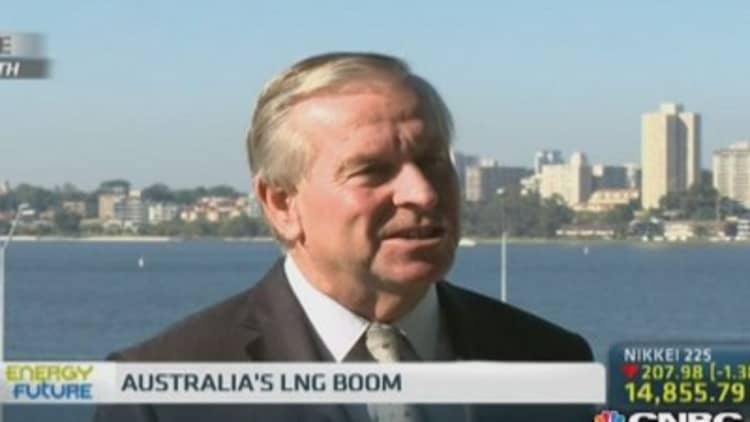
The "clock is ticking" for Australia to address the explosive costs and inadequate productivity impeding its oil and gas sector or it risks losing out on $180 billion in fresh investment over the coming years, warn industry participants.
"Our ability to capture the second wave of liquefied natural gas (LNG) investment is at serious risk from rising competition in the global marketplace," said David Byers, chief executive of Australian Petroleum Production & Exploration Association (APPEA) - an industry association representing companies which explore and produce oil and gas in the country.
Read More Japan, Australia ready trade pact on cars, beef: report
"If we're able to remain competitive and attract capital needed to develop these projects we have to reduce the cost of doing business in this country," he said on the on the sidelines of the APPEA conference in Perth.
The oil and gas sector is an important pillar of the economy, creating significant wealth for the country through employment, export income and tax revenue. The sector contributed $8 billion in tax revenue in the financial year ended June 2013, which is set to grow to $13 billion by 2020.
Almost $200 billion is currently being invested in oil and gas projects including seven major LNG export projects. However, with global LNG demand forecast to grow to around 470 million tonnes per year by 2030, 200 million tonnes in new capacity will be needed, says APPEA. This translates into $180 billion in further potential investment over the next two decades, it estimates.
Australia's high cost local environment and the emergence of new LNG players in East Africa and North America have increased the competition Australia faces as it seems to win market share and garner investment.
Read More Why we're upbeat on LNG: Western Australia Premier
With the country's mining investment boom coming off the boil, remaining an attractive investment destination becomes all the more important.
"The 'window of opportunity' to turn things around isn't a couple of years anymore…the clock is ticking," said Roy Krzywosinski, managing director of Chevron Australia. "We need to make sure Australia isn't pricing itself out of the market in terms of wages and productivity."

APPEA has estimated the cost of delivering LNG to Japan, the biggest market for Australian gas, could be up to 30 percent higher than comparable projects in Canada and Mozambique.
Louis Bon, managing director of Japanese oil and gas company Inpex's Ichthys project in northwestern Australia also said labor costs are a key concern.
"The labor costs in Australia are high and I haven't seen any signs of them coming down – it is something we are watching very closely. If there were some additional works that we're not anticipating – immediately you're talking about a significant cost increase," he said.
Read MoreAustralia's resource plays: Here are experts' top picks
While the resources boom – which has been a driver of the significant increase in wage inflation in the recent years – has cooled, labor costs remain on the rise.
The inflation in wages in the offshore construction industry has led to a barge welder earning around $400,000 a year, and tradespeople, cooks and laundry hands earning around $350,000. This represents a doubling over the past 6 years, according to Chevron.
The industry is calling for liberalization in restrictive workplace laws, including the Fair Work Act, which gives unions a large bargaining position in the industry.
Another important reform is moving away from the short-term nature of project agreements, say industry participants. Current labor agreements do not cover the construction life of LNG projects resulting in a lack of certainty around labor costs.
Read MoreAussie dollar strength: Why it's here to stay
James Baulderstone, vice president, Eastern Australia at Santos says he's optimistic that Australia will remain competitive and achieve its ambitions as a leading global supplier of LNG.
"At the end of the day you have all the gas sitting around that you like, you have to bring it to the surface at a competitive cost…but Australia is very good at solving problems and I'm confident that with the right will, communication and balanced discussion, we'll get there," Baulderstone said.





